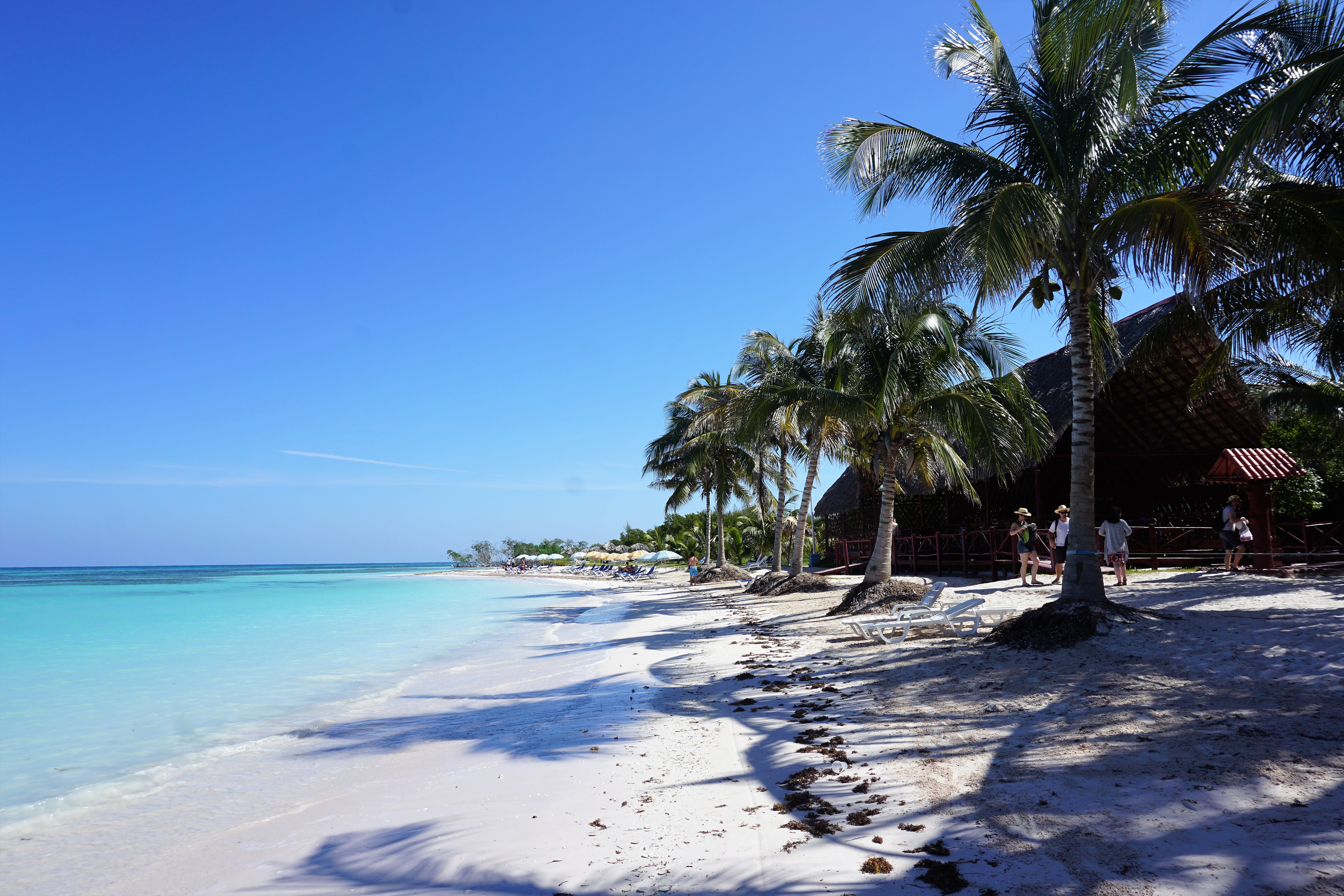
LAST UPDATED: May 11th, 2019
This post may contain affiliate links. When clicked, I may receive a small percentage of each sale. This does not affect your price in any way. As an Amazon affiliate I earn from qualifying purchases. See our full disclosure policy and privacy policy for more details.
When we first started planning our trip to Cuba, I found many articles detailing where to go and what to do, so planning our itinerary was a cinch! I managed to put together an itinerary that would have us visiting 4 different towns along the northern coast of the island. But when we arrived in Cuba, certain things came as a bit of a surprise… So I put together this list of Cuba travel tips that no one ever tells you about when you’re planning a trip to Cuba. May they help you plan your trip, and avoid some of the surprises we experienced during our trip!

18 Cuba Travel Tips That No One Ever Tells You
Plan to wait. A lot.
Whether you’re going to the bank/money exchange (CADECA), to buy wifi cards or to the grocery store, be prepared to wait your turn. But you won’t wait in a line… Oh no. You’ll wait in a haphazard-looking gathering, with no idea where you fall in the order of things. But you’ll notice rather quickly that it’s the most genius system ever!
See, as you join the queue, you’ll ask who is last in line (quien es el último?). You then know who you will follow into the building. Once the next person arrives and you tell them you are the last (la cola- the tail), you now have someone on either side of you in the line up, and can wander away at will to complete whatever other errands you have! So long as you make it back before the person in front of you enters the building, your place in line in safe. It’s a good idea to ask the person infront of you who is infront of them (detrás quien va?), just in case they leave before you get back.
Genius! And since you’ll spend a good portion of your time in Cuba waiting for your turn, this is one of the most helpful Cuba travel tips that no one thinks to tell you before you go.
Get yourself some CUP, or ‘moneda national’
While travelling in Cuba you’ll quickly notice that there are 2 different currencies used. Cuban Convertible Peso (CUC) is used by tourists, and Moneda Nationale (CUP) used by locals. One CUC is equivalent to 24 CUP. You’ll find that most places in Cuba have no problem accepting CUC , so you can easily travel the country with one currency. BUT in local establishments where things are priced in CUP, the math gets a little funky sometimes. Like something might be priced as $20 CUP, but they’ll tell you it’s $1 CUC. Not a big deal, but if you get that everytime you pay, it will add up over your time in Cuba. So it’s often easier and more benficial to your budget to pay in CUP.
You can exchange your currency or CUC for CUP in any Cadeca. And if you’re exchanging CUC, you don’t need to show your passport to complete the exchange.
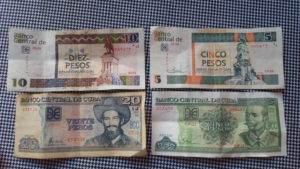
Top bills are CUC, bottom are CUP
You’ll need your passport to exchange money, buy internet cards, buy bus tickets and check into your casa/accomodation
I was lucky when I first bought internet cards that I happened to bring my passport with me that day. Had I not, I would have been sorely disappointed after waiting in line! The government basically tracks you as you move around the country, so you can expect to show your passport anytime you purchase these things.
When you check into your casa or hotel your host will also ask to see your passport, and likely take it for a fe wminutes to record your information in their records book. You host is required by law to keep track of any guests they host, so they can accurately pay the government their fees. You’ll also be asked to sign the book where they’ve entered your information.
Keep this Cuba travel tip in mind when you head out for the day, because you’d hate to be turned away after waiting in line somewhere!
Bring CAD, Euros or Mexican Pesos for the best exchange rates
USD comes with a 10% fee (in addition to the 3% exchange fee with any exchange), so you really don’t want to bring that to convert in the country. Exchange your USD to CAD, Euros or Pesos if you’re coming from the US.
You’ll be able to exchange any of these and other currencies at the local currency exchange office, or CADECA.
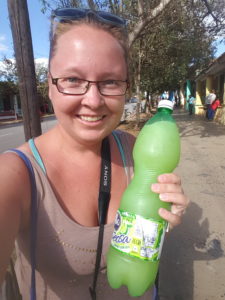
Buy fresh juice by the bottle at local cafeterias
Arriving in Cuba from Mexico, I arrived with a well-established fresh juice habit. So at first I was pretty bummed to see that we seemed to be stuck with expensive water and Cuban soda. Walking around we noticed the little local cafeterias all advertised glasses of fresh juice for $2CUP. Turns out, they’ll also sell 1.5L bottles of the same juice! Usually around $1CUC or $24CUP, these bottles are kept in their fridge so you have to ask for them. If they don’t have the bottles pre-filled in their fridge, they’re often willing to fill your empty bottle instead.
Tip: Try a glass of juice before committing to a full bottle. Not all juices are created equal! Some are overly sweetened, and others are more of a kool-aid style drink.
You can buy 1 hour and 5 hour internet cards. Get the 5 hour ones
My first visit to ETECSA had me buying just 2 1 hour internet cards, not realizing that there were also 5 hour ones available. So within a few days I was back in the same line looking to buy more. Save yourself the time and just buy some 5 hour ones right off the bat! Even if you don’t plan on spending much time online, you’ll no doubt find yourself in a park or at a hotel looking up details for some of your adventures!
Tourists use Viazul to travel between cities. Locals use Omnibus
We learned this one the hard way. On our second day in Cuba we got caught by a bici-taxi who offered to give us a tour and drop us as the Viazul station at the end. After our less-than-stellar tour, he took us to what he referred to as the second Viazul station. Turns out it was actually the Omnibus station. We went in, waited in line, then tried to buy tickets… Where we were promptly denied and told that Omnibus was for nationals only. Awesome!
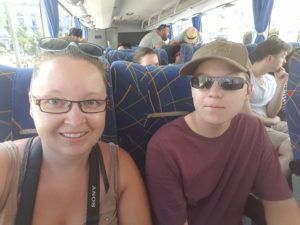
Buy your bus tickets as far in advance as you can
We didn’t have any luck trying to buy tickets online, so I’m not sure about that process. But we did buy several from Viazul offices. Thankfully in the 5 buses we booked tickets for, only one was sold out. And that was because I tried to buy the ticket only 36 hours in advance. To ensure you get the routes you want, buy tickets as soon as you know your itinerary!
Don’t worry, you’ll fit in
Cuba is wonderfully racially diverse. You’ll look like you belong, no matter what your heritage is! The coolest thing about Cuba is that until someone opens their mouth to talk, you really have no idea where they hail from. Cubanos are a wonderful mix of many races, so much so that even WE looked like we could have been Cuban (especially with 4 months of Mexican tanning time behind us!)!
Wear anything you want (you should anyways, but I digress). You can rock your pink hair and platform shoes and carry your man purse or fanny pack with pride. No matter what your style, you will feel comfortable wandering the streets of Cuba!
Fanny Packs and murses (man purses) are in
Never have I seen so many of these accessories in a single place! Nearly every guy has a form of cross-body bag that mimics a purse, and fanny packs are everywhere. Truth be told, the fanny packs seemed to be mostly on tourists… but sometimes that’s hard to judge on first glance, thanks to the diversity in Cuba! At any rate, they’re both in, and a good idea for carrying your personal items while you’re moving around the country.
You can eat for around $0.50CUC/meal (or less!)
As long as you’re ok with pizza, sandwiches, hotdogs or rice and beans, you can easily eat for well under $1. Local cafeterias offer menus filled with these items, and some slightly more expensive additions. Not all sandwiches and pizzas are created equal so try out a few different places to really get a feel for the offerings! We found some places we loved, and others that just filled our stomachs. You won’t go hungry in Cuba, but I often joke that no one goes to Cuba for the food… It’s generally fairly basic and bland, and doesn’t come with the same abundance of seasoning and spice that we’re used to from living in Mexico.
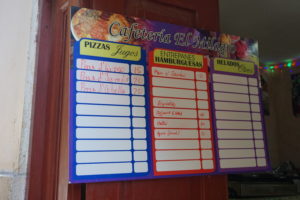
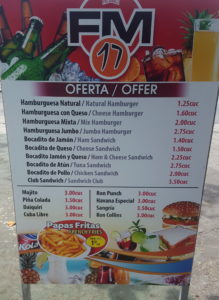
Read more: Travelling on a budget? Check out this post about how to save money while travelling!
Don’t plan on cooking for yourself
Finding a casa with a kitchen is difficult enough. But even if you do, you’ll likely find that finding the food to make meals in it is both difficult and expensive. And when the cost of eating out will run you $0.50-$3CUC/person, it’s not a big deal to eat out.
If you’re staying in a casa particulare, your host will often offer to cook you some or all meals, for an additional fee. We found prices were generally $3CUC for breakfast and $5CUC for lunch and dinner. The bonus here is that you’d be able to help your hosts income, and get to experience some truly local cuisine. We opted to eat out around town instead, because we found $10CUC to be too high for both of us when we could just grab a pizza at a cafeteria or a meal at a paladar (local restaurant) for a couple bucks.
 Carry a guidebook everywhere
Carry a guidebook everywhere
Travelling for almost 3 years has taught us to be very reliant on our cell phones & internet for any questions we have. Which does not bode well for internet-less Cuba! Sure, there’s internet parks and hotels with wifi access… But those require an annoying log-in process, and you actually have to FIND them, first. Not an easy task when there’s only a couple hundred parks around the whole country! Instead, grab yourself a good guidebook and use that as your point of reference as you move around.
I hope you’re OK with carbs!
Pizza, sandwiches, hotdogs, spaghetti, burgers, rice, black beans… These are the foods you’ll see at cafeterias and paladars most often in Cuba, especially if you stick to more touristy centers. But even in local neighbourhoods, you’ll find yourself overwhelmed at the abundance of carbs! Even if you order fried chicken, seafood or any other entree from a restaurant, it will come with a seriously healthy side of rice. Like, I couldn’t even make a dent in what was given to me!
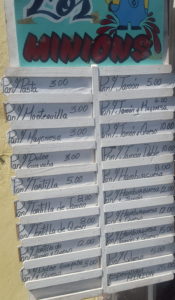
Don’t plan on buying toiletries or snacks there

While both are available in government run shops, the price tags will have you running right back out the door. It’s jaw-dropping how expensive some of these items are! A tin of ‘pringles’ ran around $4CUC, while a bottle of shampoo was $3-7CUC. It’s no wonder we stock up on toiletries to gift to locals while we travel around! 
Taxi prices vary greatly. Bargain with the drivers
Unless you get on of the yellow taxi cars or vans, you’ll be able to bargain with them a bit. We frequently got our prices to about half of what they orginially quoted us. And taxis are everywhere.. If one won’t budge, ask another!
In the communities with horse and buggy taxis we found that they’d charge per person, but would make a deal if there were a few of us. So always try to bargain a bit!
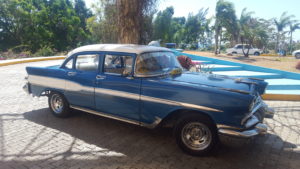
General rule of thumb: The nicer the car, the less likely they are to lower their prices
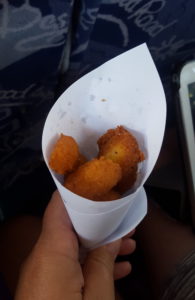
Buy the snacks in little white paper cones
They could be one of many things, so ask before you buy… We found these tasty little corn flour bites at the bus station in Matanzas for $10CUP. They were salted then sprinkled with ‘mojito mix’ as the vendor called it, and absolutely delicious! We also found honey roasted peanuts in skinny cones sold by multiple people around Havana. Those were only 3/$10CUP! In a country where snack foods aren’t the easiest to find, these little snacks are well worth the purchase!
It’s cheaper to book your casa ahead of time on Airbnb
It’s SUPER easy to find a place to sleep pretty much anywhere in Cuba. Many homes are set up as ‘Casa Particulares’, which means they have an extra room or apartment set up to host travellers. These are denoted by a sign out front that looks almost like an upside down anchor. Find a sign, knock on the door, and see if they have availability. If they don’t, likely they have a friend that does.
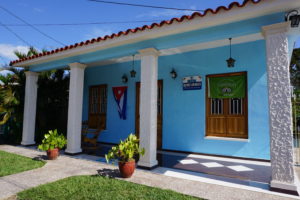
BUT, if you have an idea of your itinerary, you will benefit from booking them ahead of time on Airbnb. We found that not only was there comfort in knowing we didn’t have to look around for a bed, prices were generally a bit cheaper, too! Rooms we booked for $12-15cad/night online were asking $15-25CUC/room in person. The only trouble with this method comes with the fact that the payment processor within Airbnb doesn’t work within Cuba. So you have to plan your itinerary ahead, or be able to contact a friend outside of the country to complete a booking for you.
Our tried and tested Airbnb recommendations:
Havana
1- Casa Laura y Felix Lovely couple right near historic centro. The room is literally silent, and very comfortable. This will be our first stop next time we visit Cuba!
3- Casa Antonia Quiet home just a few minutes from the Viazul station. Only met Antonia for a few minutes, but she is very nice and her english is excellent.
Matanzas
Hostal Cuba OK, Casa Milagros Very kind family just a block away from the Viazul station
Vinales
Villa Marianela A very nice room just outside of the center. Marianela is pleasant, and even greeted us with a glass of fresh juice on arrival.
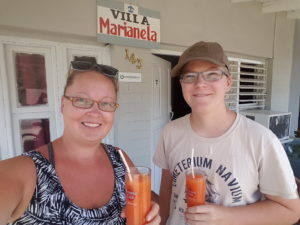
These Cuba travel tips should help make your visit to Cuba a bit easier, and save you some of the surprises we experienced when we first arrived.
Do you have any Cuba travel tips? Share them below!
Did you find this post helpful? Give it a share!


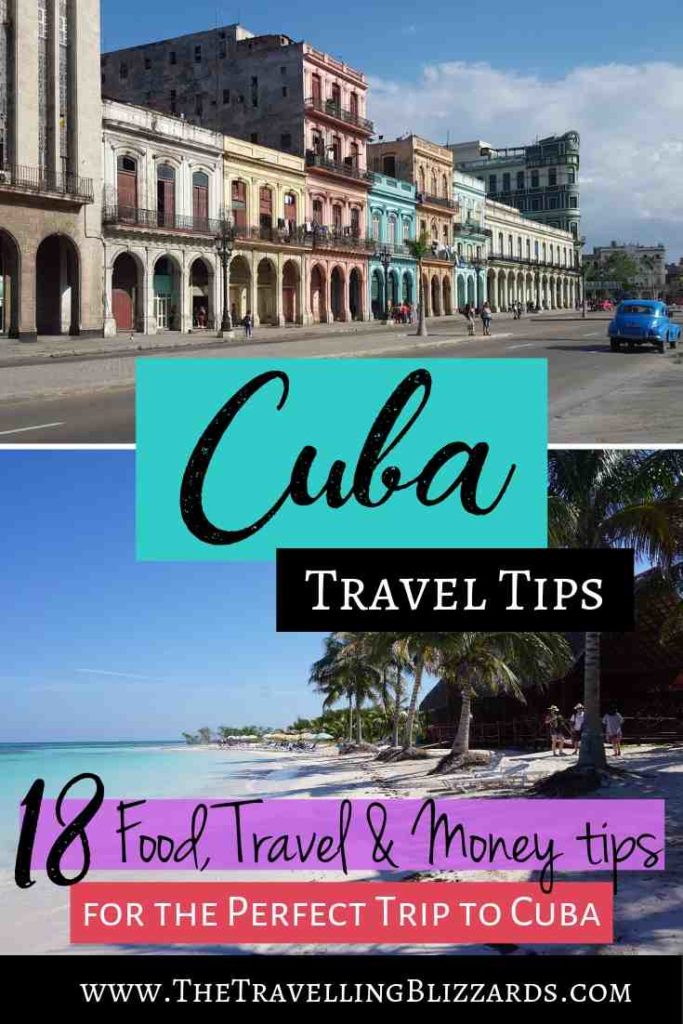
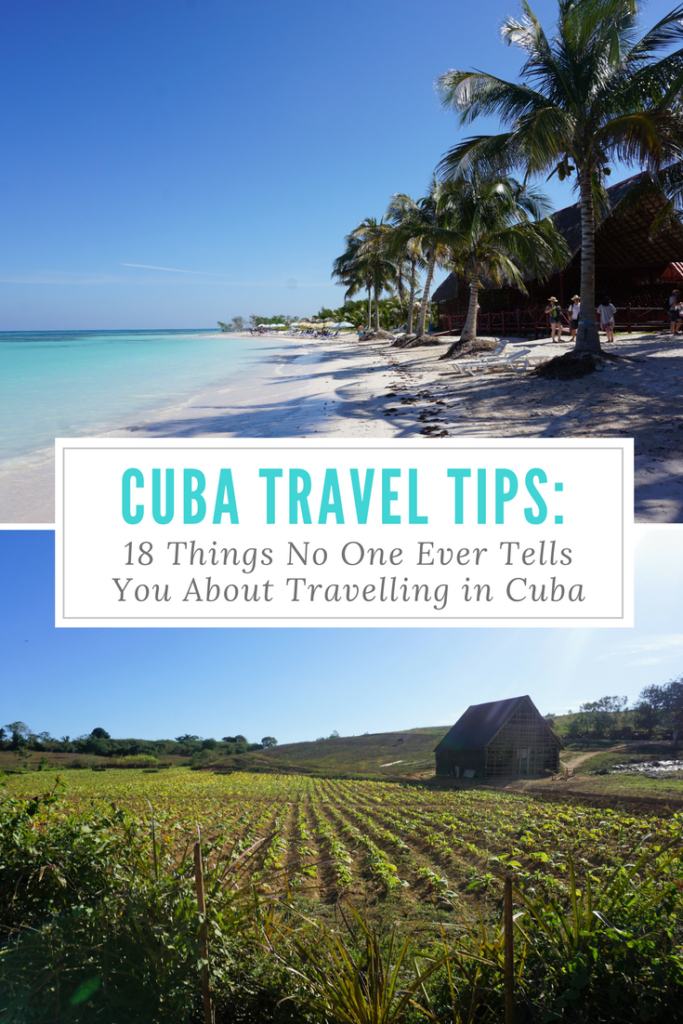
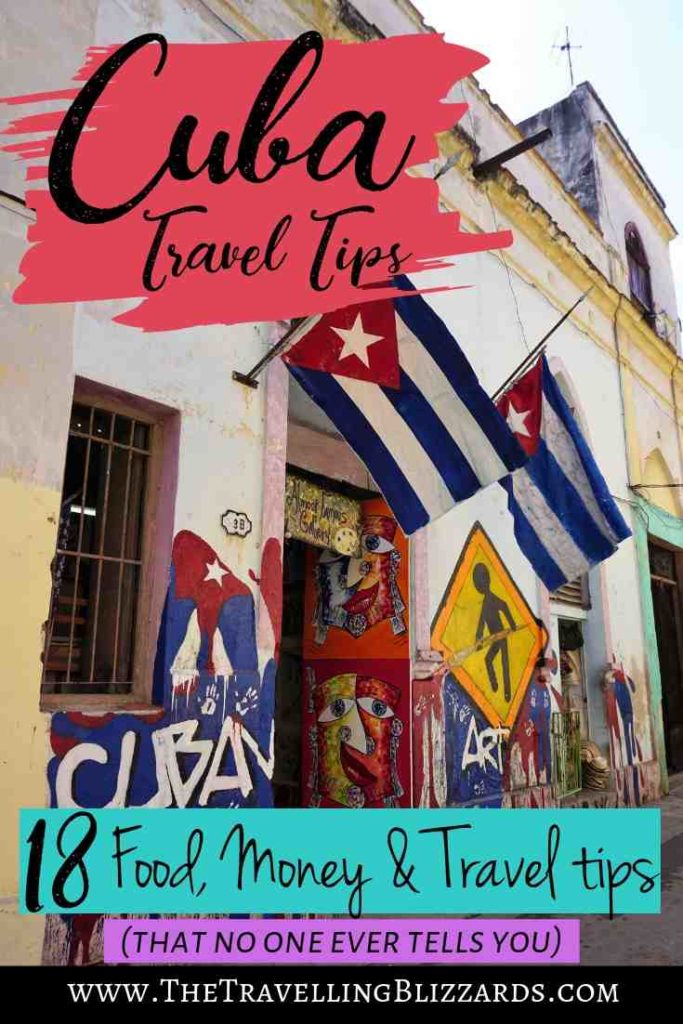
Great tips- I hope to visit Cuba someday 🙂 That’s so crazy to me you can just go knock on people’s doors to ask for a place to stay! I wonder if that will change as tourism grows in Cuba!
I had no idea about the line system! That’s actually so helpful for whenever I end up going there!
So many great tips! I haven’t been to Cuba for 8 years, so it has probably changed a lot since then!
Super happy I found your blog through FTB. I love your story and how you and your son live your lives 😀 I couldn’t agree more with your philosophy!
Love your travels. I discovered you in “The Six Figure blogger calls. I haven’t written much on my blog but still keep it and love following others.
Ahh, yes carbs/processed foods/nutrition in Cuba are a huge problem 🙁 And cooking for yourself is almost impossible. A lot of travelers don’t realize this before coming to Cuba.
Omg fabulous blog post! I’ve wanted to visit Cuba for so long and now even more. Awesome!
Excellent tips, thank you! I am headed to Cuba in 2 weeks. Your post is really well written. Great advice, thanks!
Very helpful. I went to Cuba in 2016 and your tips are great. Another tip to add–you can tell where the internet signal is strongest by following the crowd in the park. The side of the park with the crowd has the best signal.
These detailed tips are so very helpful! All in one place! I hope to visit Cuba one day when my children are a little older!
I had no idea there were two different currencies in use there. I’ve been wanting to visit Cuba for ages and was delighted when it was made a bit easier for Americans. I’m lucky to be close enough to Canada to easily fly from there too.
These are all such great tips! Especially about the currency and buses, I’ll keep them in mind for when I eventually make my way to Cuba
This is great collection of tips. We never got the hang of the queuing to be honest, but we did try lol. I stupidly forgot to bring a leg razor and had to go into ten shops to find one. When I did find one, it cost around £8 but needs must! I wish we had tried more of the snacks because those mojito bites sound delicious!!
This is such a great post. I can’t believe that snacks and toiletries are so expensive compared to other things. I have to admit I’ve never really had Cuba on my radar, but I think I’ll have to check it out.
I’ve always wanted to visit Cuba, it looks like such an incredible place- like nowhere else! These are great tips and I’ll have to remember them for the time I get to go!
What an incredibly interesting country and an incredible post. We definitely want to visit Cuba someday and knowing all of this will definitely help us. Some of this is bizarre like the exchange rate for dollars and pesos and CAD etc. The food seems like it will be interesting.
I went to Cuba last year and loved it! I;m so used to having convenience stores on every corner, so it was strange to not be readily available to buy snacks. I knew ahead of time and bought my own snacks. I thought Cuban food was great, I researched the best places to eat and was not disappointed. We didn’t take the bus, but was scammed by taxi drivers while there.
Thanks for the wonderful tips! I have always been fascinated with going to Cuba and I hope to get there one day! There’s so much I didn’t know!